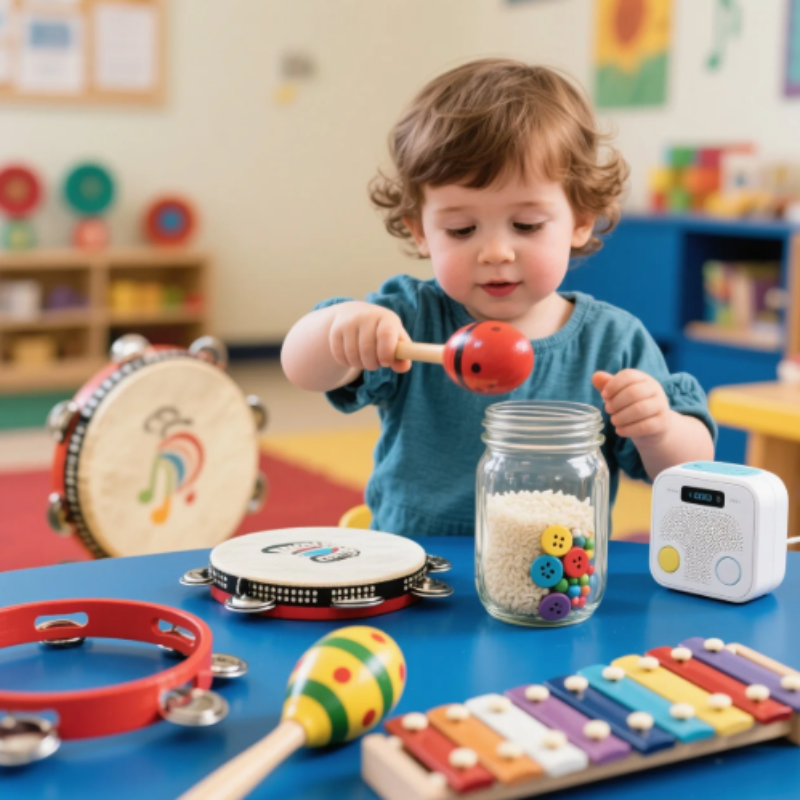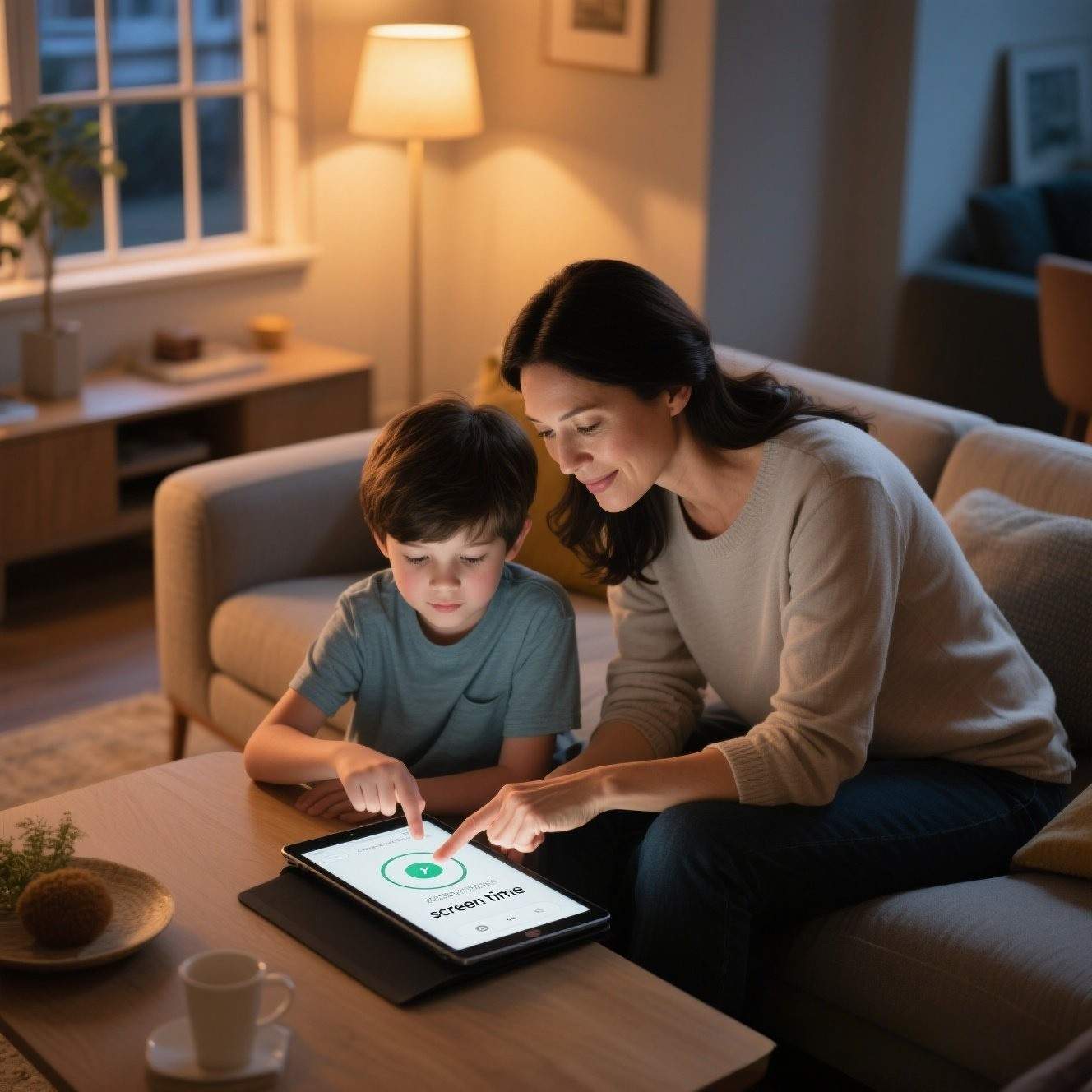Introduction
Screens are woven into nearly every corner of modern childhood—classrooms stream digital lessons, cartoons pop up on phones during grocery runs, and grandparents read bedtime stories over video calls. Because this digital presence can enrich learning and crowd out crucial real-world experiences, parents face the tricky task of striking a balance. Regulating screen time isn’t about waging war on technology; it’s about teaching kids to treat devices like desserts—fun in moderation, but never the main course. This guide walks you through practical strategies that combine expert recommendations with calm, everyday parenting wisdom so you can build healthy habits without constant power struggles.
1. Understand Screens—and Kids’ Developmental Needs
Not every minute in front of a screen is equally impactful. Video-chatting with relatives nurtures relationships, while autoplay cartoons during dinner can erode family conversation. Early brain-development research shows toddlers need sensory play and face-to-face interaction to wire language pathways, so passive viewing should be minimal under age two. Preschoolers learn best from interactive shows that prompt them to answer questions or move their bodies. School-age children benefit from coding games that teach logic, but they also need unstructured play—climbing trees, inventing cardboard cities, or just day-dreaming—to grow creativity and emotional regulation. Approaching screens as tools, not toys, lets parents ask, “What purpose does this device serve right now?” rather than “How long can I allow it?” When kids see that certain apps help them draw, research homework, or chat with cousins abroad, they begin to understand quality over quantity. This mindset shift turns technology from a mysterious enemy into an everyday resource you can evaluate together.

2. Set Age-Appropriate Daily Limits
Clear numbers prevent endless negotiations—few parents enjoy haggling over “five more minutes” at bedtime. Pediatric organizations often suggest up to one hour of high-quality content for preschoolers and two hours for primary students, with consistent guardrails for tweens and teens. Think of these figures as speed-limit signs: they signal a safe maximum, but savvy drivers also slow down for curves. Create a visible chart—sticky-note bars on the fridge or a magnetic clock face—so kids can “see” minutes ticking away; visual cues lift the burden off your voice. No-screen zones anchor family culture: the dinner table sparks conversation, the last hour before bed protects melatonin production, and short car rides become opportunities for impromptu spelling bees. If school requires laptops, track recreational minutes separately so academics don’t eat into free-play quotas. Finally, remember that limits work best when paired with options; a stocked craft bin or sidewalk-chalk bucket helps “Time’s up!” feel less like a loss and more like a pivot.

3. Build a Balanced Daily Rhythm
Imagine screen time as one ingredient in the day’s recipe: sprinkle, don’t pour. Start mornings with high-energy activities—bike rides, sandbox missions, or family yoga—so kids arrive at afternoon device time already satisfied physically. Midday “quiet hour” can pair podcasts with LEGO builds, giving younger siblings a rest and older ones a gentle mental reset. Post-school, designate a “digital pit stop” for homework apps, and transition to outdoor play or chores before dinner. Predictable routines reduce the siren call of endless scrolling because children know a fun alternative is always around the corner. Stock analog options at eye level—puzzles in a low cabinet, a costume box behind the sofa—so “I’m bored” doesn’t automatically equal “I need the tablet.” Whenever possible, weave screens into family rituals rather than solitary escapes: queue a cooking tutorial together, follow an online dance class in the living room, or video-call grandparents while baking banana bread. When screens complement shared experiences, they enrich rather than replace connection.

4. Harness Technology for Good—Parental Controls & Co-Viewing
Ironically, the best defense against tech overload is often more tech, used wisely. Built-in parental controls on phones, tablets, and gaming consoles can shut off devices at bedtime, filter mature content, and generate weekly use reports—the digital equivalent of a nutrition label. During setup, involve kids in choosing filters; when they understand the “why,” they’re less likely to sneak work-arounds. Combine these tools with co-viewing: sit beside your child during a new app or show, ask open-ended questions (“Why do you think that character made that choice?”), and model critical thinking. This turns passive consumption into active learning while giving you insight into hidden ads, in-app purchases, or social-media pressures that could undercut family values. For older kids, teach them to curate feeds—unfollow accounts that breed comparison and bookmark channels that foster skills. When technology becomes a conversation topic instead of a forbidden zone, children feel empowered to seek guidance long after age-restricting locks disappear.

5. Model the Digital Citizenship You Want to See
Kids copy what they witness, not what they hear. If a parent scrolls through work emails during story time, the unspoken lesson is that screens outrank eye contact. Create phone-parking spots—a decorative basket by the front door or a charging station in the hallway—and agree as a family that devices rest there during meals and game nights. Make it fun: label charging cords with silly names or host a weekly “digital detox challenge” where whoever avoids unnecessary scrolling the longest picks Saturday breakfast. Celebrate analog joys together: read paperbacks on the sofa, sketch in a shared journal, or plant herbs on the balcony. Point out the emotional benefits—“I felt calmer painting this mug than doom-scrolling”—so children learn to listen to their own bodies. When kids witness adults balancing online work meetings with offline hobbies, they internalize the idea that screens are versatile tools, not default entertainment.

6. Involve Kids in Rule-Making and Problem-Solving
Authority alone rarely solves modern tech dilemmas; collaboration nurtures buy-in. Hold a “digital family meeting” and ask each child what they love about screens and what hobbies they wish they had more time for. Together, draft a “device contract” that lists daily limits, acceptable apps, weekend exceptions, and consequences for breaches. Laminate it and let kids decorate the border—pride in authorship promotes compliance. Revisit the agreement monthly, adjusting for school projects, sleepovers, or sports seasons. When meltdowns happen (and they will), keep consequences consistent but compassionate: a temporary device pause paired with a reflective walk outside shifts the focus from punishment to problem-solving. Praise self-regulation moments—“I noticed you paused YouTube to finish your puzzle; that shows real responsibility.” Over time, children move from external rules to internal habits, carrying healthy digital boundaries into adolescence and beyond.

Conclusion
Balancing children’s screen time is less about strict prohibition and more about cultivating a thoughtful digital diet—one that feeds curiosity without overwhelming it. By combining developmental insights, clear boundaries, consistent modeling, and open family dialogue, you transform “Turn it off!” battles into shared guidelines everyone understands. Over time, kids internalize these principles, learning to choose when to power up and when to look up—a lifelong skill as valuable as any school subject.





